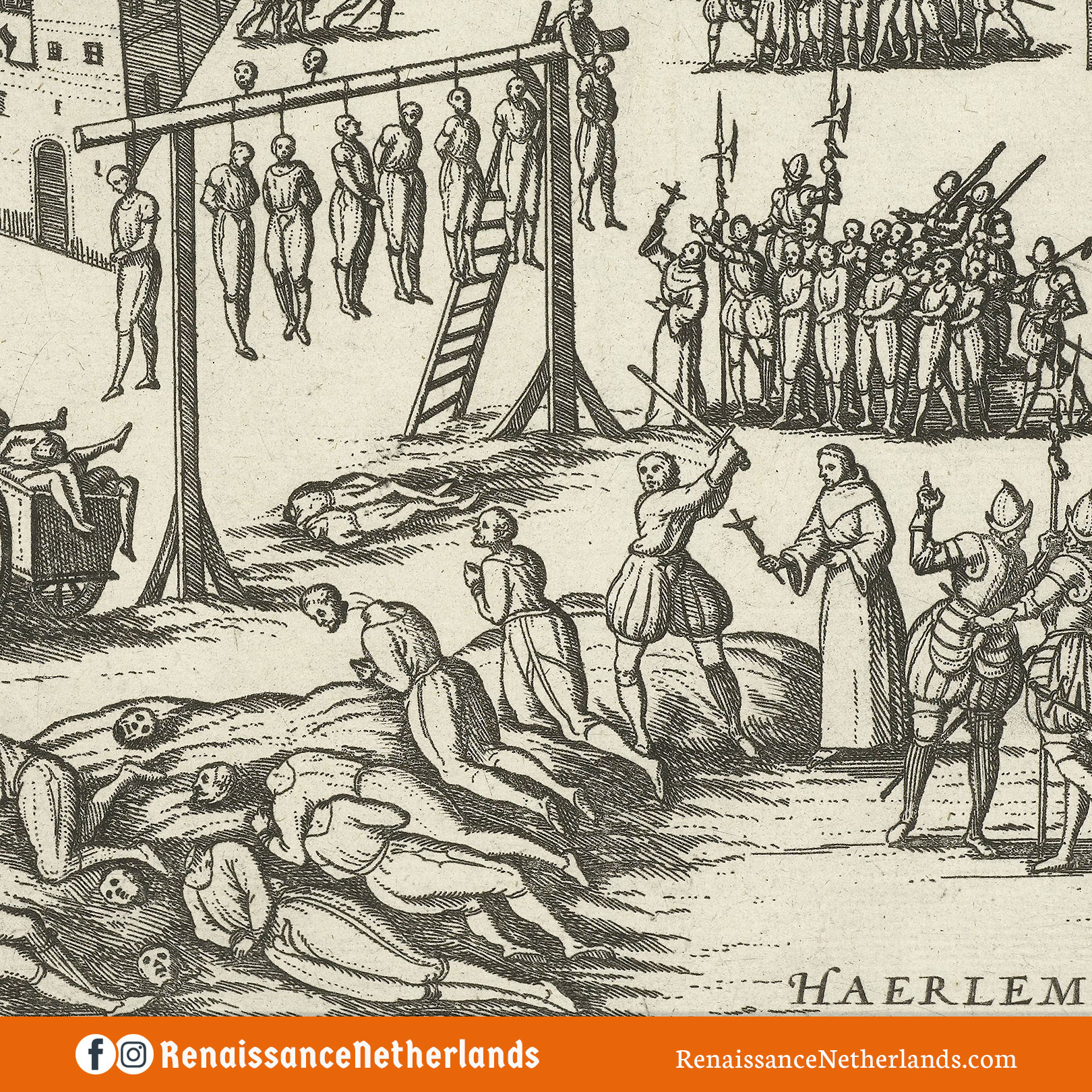File this under “things could always be worse.”
The city of Haarlem, just west of Amsterdam, was decidedly not part of the early turmoil and revolt that began spreading across Holland, Flanders, and Brabant in the 1560s. There was no iconoclastic vandalism of Catholic churches, and the city administration did not initially support the “Geuzen” who reignited the rebellion in 1572.
But brutal Royalist massacres in cities across the Seventeen Provinces (the name of the Habsburg-controlled majority of the Low Countries) in 1572, combined with the re-emergence of William of Orange as the developing figurehead of the rebellion caused Haarlem’s cityfolk to declare their allegiance to the Prince of Orange and the rebels.
The siege would last from December 1572 to July 1573 and give rise to the (propagandistic) legend of folk hero Kenau Simonsdochter Hasselaer, a widow who organized the women of the city in its defense.
The city’s defenses were not strong enough to defend against a protracted, determined siege to begin with. Attempts to relieve the city by both land and see were unsuccessful. After seven months the city surrendered.
The citizenry and town council negotiated a settlement of 240,000 guilders to the Royalist army to be spared from the murderous bloodletting and pillaging that had been unleashed on Naarden, Mechelen, and Zutphen.
The arrangement was mostly honored. To a degree.
Save for the German mercenaries (the late-era landsknechts whose reputation as soldiers were too important to risk spurning), the rest of the garrison of native Dutch, English, and French Huguenot (i.e. Protestant) defenders were all executed, along with forty town citizens who charged with sedition after being found to have played a key part in the city’s rebellion.
All in all, more than 1,500 people were executed, and this doesn’t take into account the lives lost on both sides during the siege itself.
The stories state that the royalist soldiers – Spaniards, Italians, and Walloons – ran out of bullets and black powder after the capitulation. They resorted to executing their victims in the River Spaarne.
Though the city was ultimately taken by the Habsburg Army of Flanders, its stubborn resistance became an example for other rebels to rally around. The Spanish and royalist forces, though powerful, could be resisted and weakened. There was hope.
The defenders of Haarlem did not die in vain.
Selected Sources:
Image source: https://www.rijksmuseum.nl/nl/collectie/RP-P-1949-433
The 2014 Dutch film about the siege and its eponymous heroine Kenau:
https://www.imdb.com/title/tt2512170/
Jennifer Hendricks, “Case marking (accounts) in collapse: evidence from Early Modern Dutch egodocuments (1572-1573)”
http://hdl.handle.net/1885/9399
Geoffrey Parker, The Dutch Revolt
ISBN 0140137122
Anton van der Lem, Revolt in the Netherlands: The Eighty Years War, 1568-1648
ISBN 1789140862
